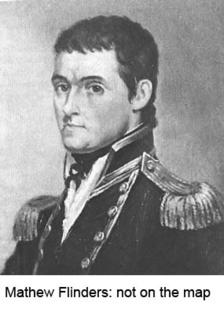Interlude - Space is the place part 1.
City of lights

It wasn’t the Portuguese traders on the way to Timor in the early 17th Century. It wasn’t Dutchmen Dirk Hartog who left his famous plaque in Shark Bay in 1616 or Willem de Vlamingh who first described Perth’s black swans in 1697. It wasn’t the Frenchmen Entrecasteaux or Hamelin who scoured the south west in search of foreign bases in the twilight of Napoleon’s 18th Century. It wasn’t the celebrated English mapper Mathew Flinders in the Investigator in 1801-02, as he charted the future site of WA’s first colony in King George Sound. It wasn’t Captain James Stirling who first appeared to the aboriginal tribes of the Swan River as a jang-ga, or ghost during his first foray into the future suburbs. And it wasn’t Queen Victoria who declared Perth a city in 1856.
It was John Glenn and John Glenn who put Perth and
 Western Australia on the map in 1962, in the months preceding Perth hosting the British Empire and Commonwealth Games. But neither of these men were athletes, politicians or popstars. Colonel John Glenn was an astronaut, the first American to orbit the earth, whereas John Glenn was a good citizen and resident of Perth suburb Wembley. On 20th February 1962 Glenn was in orbit above the earth in the spacecraft Friendship VII. Looking down, he saw the lights of Perth gleaming back from the darksea and darklands at the edge of the vast continent, the edge of the known physical world. He was lucky.
Western Australia on the map in 1962, in the months preceding Perth hosting the British Empire and Commonwealth Games. But neither of these men were athletes, politicians or popstars. Colonel John Glenn was an astronaut, the first American to orbit the earth, whereas John Glenn was a good citizen and resident of Perth suburb Wembley. On 20th February 1962 Glenn was in orbit above the earth in the spacecraft Friendship VII. Looking down, he saw the lights of Perth gleaming back from the darksea and darklands at the edge of the vast continent, the edge of the known physical world. He was lucky.Lord Mayor Howard hadn’t wanted to keep the lights on, in those days turned off at 1am every night, as it was ‘morally wrong’. Others doubted he would even see the lights; the American’s had never asked to see them in the first place, though one billionaire offered to pay for them. In the end, the American public did contribute £33 19s and 5d in donations to pay for the cost.
But it was John Glenn with his son and others like him, leaving lights on, laying sheets on the lawn, shining torches in the sky and making beacons with white linen and their iconic Hill’s Hoist clotheslines (below) that allowed John Glenn to see the city in a global context for the first time. How much more Australian than this and how crucial the event was in revealing the mentality of the local inhabitants.
John Glenn’s safe return to earth and his public thanks of Perth, which he dubbed City of Light, led to the first international record of Perth on a map. Paris, France is also known as the City of Lights, but people do not often get the two cities confused; Paris is well known to be more exciting than Perth.
In the first 133 years, from founding in 1829, there was no need to know of Perth’s existence and it was another 25 years before Perth made a name for itself again when it hosted the almost forgotten Americas Cup in 1987. This latter event was eventually made into a feature length Hollywood film in 1992 starring Jennifer Grey and Mathew Modine and entitled Wind. In 1998 Perth citizens once again turned on their lights to honour John Glenn during a pre-retirement Spaceshuttle Discovery flight

0 Comments:
Post a Comment
<< Home